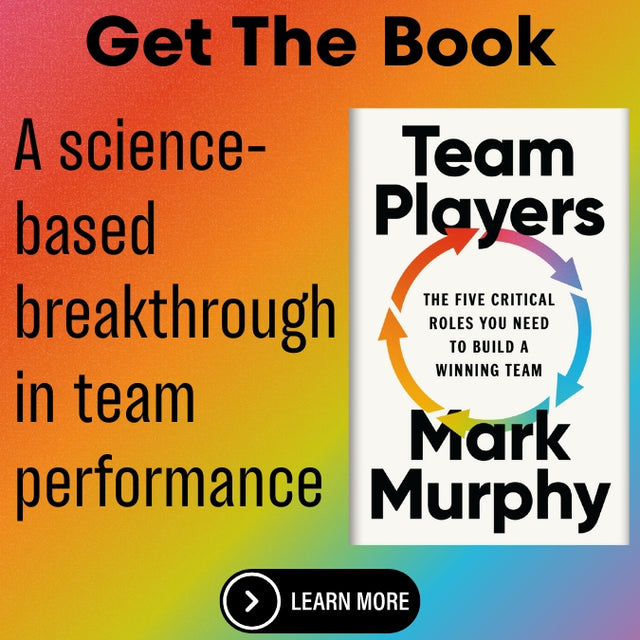Optimism Bias: Mechanisms, Implications, and Mitigation in Business and Society
Introduction to Optimism Bias
Optimism bias is a pervasive cognitive bias in which people overestimate the likelihood of positive outcomes and underestimate the likelihood of negative ones. In essence, individuals believe that bad events are less likely to happen to them, while good events are more likely. This bias is universal – found across genders, ages, and cultures – and is sometimes called unrealistic optimism or comparative optimism. For example, surveys find that many smokers genuinely think they are less likely to get lung cancer than other smokers. Likewise, investors might assume they are less exposed to market losses than their peers, all owing to an inflated sense of optimism.
An illustration of optimism bias in action. The character's expectation shows a straightforward path to success, while the reality reveals hidden pitfalls. Such imagery captures how optimism bias leads us to overlook risks and assume a smoother road to our goals than truly exists.
On the surface, optimism can be beneficial – it boosts morale, resilience, and motivation. Psychologists note that positive expectations can reduce stress and anxiety, contributing to mental and physical well-being. Indeed, about 80% of people exhibit mild optimistic bias as a natural human trait. However, the "bias" aspect means a distortion of reality: systematically expecting better results than objective analysis would warrant. In business and policy decisions, this distortion can lead to serious pitfalls: underestimated risks, overallocation of resources to dubious ventures, failure to prepare for crises, and other costly misjudgments. This report examines the psychological and neurological underpinnings of optimism bias, explores its real-world impact on finance, health, and public policy, and discusses strategies to manage its influence on decision-making.
Psychological Foundations of Optimism Bias
Multiple psychological factors combine to produce optimism bias. Researchers categorize four key contributors: (1) our desired end-states (we want things to turn out well), (2) cognitive mechanisms in judgment, (3) differences in information we have about ourselves versus others, and (4) our overall mood or affect. In simpler terms, people are motivated to view their future rosily and often have more detailed knowledge of their own plans (which they view favorably) than of others'.
The Inside View vs. Outside View
One classic cognitive explanation is the tendency to take an "inside view" on our own projects or life events, focusing on our unique circumstances and intentions and downplaying base rates. We assume "I have a special advantage or insight, so I will do better than average." By contrast, when thinking about others, we take an "outside view" and acknowledge generic statistics and risks. This skew is evident in entrepreneurship: when asked about businesses similar to their own, entrepreneurs give realistic success rates, but when asked about their own venture, the vast majority insist they will beat the odds. In one survey, 81% of new entrepreneurs believed their chances of success were over 70%, and 33% flatly stated there was zero chance their business would fail – despite knowing that historically about half of start-ups fail within four years. This optimistic "it won't happen to me" mindset illustrates how personal motivation and ego can override statistical reality (illusory superiority is a related concept, where people rate themselves above average on various abilities).
Contributing Cognitive Biases
Cognitive biases like the illusion of control (overstating our influence over events) and confirmation bias (favoring information that supports our hopes) also reinforce optimism bias. We pay more attention to success stories and downplay warnings. Additionally, mood matters: being in a positive mood or having an optimistic personality disposition can tilt anyone's risk perception towards optimism. In fact, mild optimistic bias is so common that only certain groups lack it – for example, people with depression often exhibit a pessimism bias or more realistic (sometimes negatively skewed) expectations. Overall, the psychological driver of optimism bias is a blend of motivational wishful thinking and cognitive shortcuts: we imagine bright futures in detail and gloss over potential setbacks.
Neurological Mechanisms: The Optimistic Brain
Neuroscience research has revealed that our brains are somewhat "hardwired" for optimism. A seminal study by Tali Sharot and colleagues used functional MRI to investigate how people update their beliefs when confronted with good or bad news about the future. The findings were striking: people tend to update their beliefs strongly when given information that is better than expected, but barely update when the information is worse than expected. In other words, if you learn that the risk of some misfortune is lower than you thought, you happily adjust downward, but if you learn it's higher than you thought, your brain often fails to fully incorporate that bad news. This asymmetric learning is a biological basis for optimism bias.
Neural Networks and Selective Processing
The researchers found that this effect was mediated by selective neural coding: the brain showed a "relative failure to code" for error signals associated with undesirable information. Notably, in highly optimistic individuals, neural activity in the right inferior frontal gyrus was muted when they received bad news that should downgrade their optimism. Essentially, the optimistic brain flags errors that make us feel safer ("you're doing better than expected!") but often shrugs off errors that should make us more cautious.
Other neuroimaging studies implicate the rostral anterior cingulate cortex (rACC), a region involved in emotion and self-related thought, in sustaining optimistic outlooks. The rACC shows increased interaction with the brain's emotional center (the amygdala) when people imagine positive future events, but much less interaction for negative scenarios. This suggests the rACC may actively help us generate rosy images of the future while dampening the emotional impact of envisioning bad outcomes.
Clinical Evidence and Neural Differences
Such neural tuning could explain why most people find it easy and pleasant to picture success, yet uncomfortable and less vivid to picture disaster. Indeed, brain-injury patients with damage to certain frontal regions lose some of their optimism bias, underscoring that our default neural circuitry tilts toward optimism.
Interestingly, groups that exhibit reduced optimism bias offer clues to the neurology. For example, high-functioning individuals with autism show a weaker optimism bias on average, possibly linked to differences in perspective-taking and cognitive style. Likewise, clinically depressed individuals often have depressive realism, showing more accurate (if pessimistic) expectations about the future. Both cases reinforce that a "rose-tinted" filter on reality is a common brain default, not a guaranteed fact of life.
The Double-Edged Sword of Optimism Bias
While focusing on the pitfalls of optimism bias, it's important to acknowledge its adaptive aspects. Optimism drives innovation and perseverance. From Olympic athletes to entrepreneurs, a certain degree of unfounded optimism ("I can succeed where others have failed") is often necessary to attempt the extraordinary. Studies show that optimism correlates with health benefits – optimistic individuals tend to cope better with adversity and experience lower stress levels.
Benefits vs. Risks in Decision-Making
Psychologists have noted that positive illusions about oneself (slightly inflated self-esteem, memory of past decisions as better than they were, etc.) are common in mentally healthy individuals and can be part of maintaining motivation and happiness. In short, unwavering realism or pessimism is not emotionally advantageous for most people; some optimism helps us get out of bed in the morning and tackle challenges.
However, in business, finance, health, and public policy, the costs of unchecked optimism bias can be severe. When decisions require a sober assessment of risk and reward, optimism bias can skew forecasts, encourage reckless undertakings, or blind us to warning signs. As the following sections illustrate, optimism bias has played a pivotal role in major financial crises, public health behaviors, and policy failures. The goal for leaders and organizations is to strike a balance – harness the motivational power of optimism without succumbing to dangerous wishful thinking.
Optimism Bias in Finance and Investment
In the financial realm, optimism bias can inflate market bubbles, distort investment decisions, and undermine risk management. A prime example often cited by experts is the 2008 global financial crisis. In the lead-up to the crisis, a widespread optimistic belief took hold among virtually all stakeholders – from homebuyers convinced housing prices would only go up, to bankers and regulators trusting that the financial system was stable.
The 2008 Financial Crisis and Optimism Bias
Neuroscientist Tali Sharot noted that "most people, from individuals to financial analysts to government officials, all thought that the market would go up and up and up and ignored evidence to the contrary", naming optimism bias as one of the core causes of the 2008 collapse. Financial analysts and investors held unrealistic expectations of perpetual growth and low risk, while institutions engaged in high-risk lending and investment practices under the assumption that everything would turn out fine. This collective over-optimism fed a speculative bubble; when reality finally intruded, the crash was that much more devastating.
Investment Behavior and Market Bubbles
Optimism bias continues to influence day-to-day investing. Research in behavioral finance finds that investors often overestimate the future earnings and performance of companies they are bullish on, and thus may drive stock prices to overpriced levels not justified by fundamentals. Analysts' earnings forecasts, for instance, have been shown to be consistently rosier than what companies actually achieve (analysts rarely forecast recessions or downturns until they are imminent).
The Planning Fallacy in Corporate Projects
Within companies, optimism bias can manifest in strategic planning and project investment. Corporate leaders might pursue ambitious mergers or expansions assuming only best-case scenarios. CFO surveys have shown that corporate planners often overshoot on revenue projections and undershoot on costs. In fact, optimism bias in project forecasting is so common that it has its own moniker: the planning fallacy, a term coined by Daniel Kahneman and Amos Tversky.
Case Study: Berlin Brandenburg Airport
Case in point: the Berlin Brandenburg Airport in Germany was initially projected to cost €2.83 billion and open in 2011. Due to overly optimistic assumptions about construction timelines and technical challenges, the project suffered delay after delay and finally opened nine years late in 2020 at a cost exceeding €7 billion. Here, optimism bias among project managers led to underestimating complexity and overestimating the team's ability to deliver on schedule.
Entrepreneurial Finance and Venture Capital
Entrepreneurial finance is another arena where optimism bias looms large. We saw earlier how entrepreneurs overwhelmingly believe they will succeed despite low base rates. This optimism fuels the creation of new ventures (a good thing for innovation and economic dynamism), but it also means many entrepreneurs ignore the high probability of failure, sometimes investing their life savings into ventures with slim chances.
Optimism Bias in Health and Healthcare
In health and medical decisions, optimism bias can literally be a matter of life and death. Patient risk perception is frequently distorted by unrealistic optimism. People tend to believe they are less likely than others to fall ill or suffer accidents, which can lead them to neglect preventive measures.
Health Risk Perception and Behavior
Classic studies of health behavior found, for example, that smokers often acknowledge smoking is harmful in general, but many personally believe they won't get lung cancer – "cancer happens to others, not me". This illusion of invulnerability is a textbook example of optimism bias. Similarly, young adults might know drunk driving is dangerous yet assume "I can handle it, nothing bad will happen to me," or sexually active individuals might underestimate their personal risk of contracting a disease, relative to "the average person."
Healthcare Communication Challenges
Health communication research shows that simply educating people about risks often isn't enough to overcome optimistic bias. Even when individuals are confronted with evidence that should raise concern – like learning they have a new risk factor for a disease – they frequently fail to update their personal risk assessment. One study noted that telling people about previously unknown health risks (for instance, a genetic predisposition or a hazardous lifestyle factor) had surprisingly little effect on how vulnerable they believed they were.
COVID-19 and Pandemic Response
A very salient recent example of optimism bias in health is the public's varied response to the COVID-19 pandemic. Studies during COVID found that many people believed they were personally at lower risk of infection than others, despite no evidence for such an assumption. Early in the pandemic, some individuals and leaders underestimated the possibility of the virus spreading widely in their community ("it's mainly elsewhere, it won't be a big problem here"), which delayed critical preparations.
Optimism Bias in Public Policy and Risk Management
Optimism bias profoundly affects public policy planning, especially in areas of long-term risk like disaster preparedness and climate change. Policymakers and the public often underestimate the probability or impact of low-frequency, high-consequence events, leading to inadequate preparation.
Disaster Preparedness and Natural Hazards
In disaster preparedness, numerous studies have found that communities are caught unprepared largely because of optimistic assumptions. For example, along the U.S. Gulf Coast and other flood-prone areas, it is common for residents to downplay their personal risk of catastrophic flooding or hurricanes until the disaster is imminent. Warnings can go unheeded if people believe "our town has never been hit badly, so it's unlikely this time."
Case Study: Fukushima Nuclear Disaster
Consider the Fukushima nuclear disaster in 2011: investigations found that both industry regulators and the plant operator had seriously underestimated the risk of a tsunami overtopping the seawall. There was an optimistic belief that such an extreme tsunami was so improbable that full preventative measures were not necessary – a belief tragically proven wrong.
Climate Change and Long-term Risk Assessment
Climate change is a textbook global scenario where optimism bias hampers action. Climate scientists and economists warn of severe future impacts, yet many individuals and policymakers psychologically relegate these to "other people, other places, or the far future." This is sometimes called spatial and temporal distance in risk perception.
People might think: Yes, climate change is real, but the really bad effects won't hit me (maybe they'll affect polar bears or poor countries), and probably not now (maybe decades later). This mindset was confirmed by research: "optimistic bias actually causes people to misinterpret climate change messages. They feel it may harm 'others' but not them".
Mitigating Optimism Bias in Decision-Making
Optimism bias may be deeply ingrained, but there are proven strategies to manage and counteract its influence. Businesses and policymakers have developed tools and practices to ensure that realistic assumptions guide decisions, without completely dampening the positive drive that optimism provides.
Reference Class Forecasting: Embracing the "Outside View"
One of the most powerful debiasing techniques is to deliberately look at outcomes of similar cases before finalizing forecasts. Psychologists Daniel Kahneman and Amos Tversky found that people often neglect the statistics of comparable situations, leading to overly optimistic plans. Reference class forecasting means identifying a relevant class of past projects or ventures and using their average outcomes as a baseline for your own prediction.
Risk Assessment and Scenario Analysis
Instead of relying on single-line "best guess" forecasts, incorporate systematic risk analysis early in the decision process. For example, perform quantitative risk analysis on project budgets and schedules, using ranges and probabilities rather than one optimistic figure. By modeling worst-case, best-case, and most likely scenarios (using Monte Carlo simulations or other tools), planners can see the full distribution of outcomes and are less likely to latch onto an overly rosy scenario.
Pre-mortem Analysis
A pre-mortem is a strategy developed to fight group overconfidence and optimism bias in project planning. In a pre-mortem exercise, the team imagines that the project has failed terribly and then works backward to figure out what went wrong. By pretending the failure is a fait accompli, it becomes psychologically "safe" for team members to voice concerns and list potential obstacles.
Devil's Advocates and Red Teams
To counteract optimism bias within groups (especially hierarchical organizations where subordinates may be reluctant to question leadership's optimism), designate individuals or teams to play the role of devil's advocate. A devil's advocate's job is to challenge assumptions and poke holes in plans to ensure that potential downsides are fully considered.
Tracking and Questioning Assumptions
Optimism bias often hides in the assumptions we don't even realize we're making. Maintaining an assumptions register is a practical tool in project management. Teams list out key assumptions underlying their plan (e.g., "regulatory approval will come in 3 months," "customer uptake will grow 5% monthly," etc.). By documenting these, you can examine each one critically and ask "What if this is wrong?"
Data-Driven Feedback Loops
Organizations should create feedback loops to compare initial forecasts with actual outcomes. Over time, this highlights biases. If a project consistently comes in 30% over budget, that data should inform future planning (perhaps via a rule like "always add 30% to initial estimates" unless clearly accounted for).
Third-Party Reviews and External Perspectives
External auditors, consultants, or reviewers can provide a more objective perspective that counters internal optimism bias. Because they are less invested in the company's pet projects or political dynamics, they may see risks more plainly. External stress-testing of plans (such as hiring independent risk firms to evaluate a strategy) can catch blind spots.
Improved Risk Communication
In public policy and health, overcoming optimism bias means making risks feel relevant and immediate to the audience. Research shows that optimism bias shrinks when people compare themselves to close others rather than to an abstract "average person". Thus, messaging that says "People like you are at risk" or peer testimonials ("my neighbor got flooded") can reduce optimistic dismissal.
Fostering a Balanced Organizational Culture
Organizations should strive for a balance between optimism and realism in their culture. It's neither ideal to have a pessimistic culture that stifles initiative nor an overly optimistic one that walks off cliffs. Leaders can set the tone by acknowledging risks openly and having contingency plans, signaling that realism is valued.
Conclusion
Optimism bias is a fundamental feature of human cognition – we are wired to look on the bright side. This bias yields personal and societal benefits, keeping us resilient and motivated, but it also poses serious challenges in business and policy when objective risk assessment is required. As we have seen, optimism bias has contributed to market crashes, public health complacency, underprepared communities, and countless project overruns.
Understanding the psychology and neuroscience behind it – from selective belief updating in the brain to the inside/outside view in judgment – helps explain why this bias is so persistent and hard to eliminate. For business leaders, investors, healthcare professionals, and policymakers, acknowledging optimism bias is the first critical step. The next step is proactively managing it.
By applying mitigation strategies such as data-driven forecasting, premortem analysis, and encouraging a culture of constructive skepticism, decision-makers can counteract the bias's worst effects. The aim is not to become pessimistic, but rather to temper optimism with reality – to "hope for the best, but plan for the worst." In doing so, organizations can avoid naive mistakes while still pursuing bold objectives. In an uncertain world, a balanced outlook that combines optimism's energy with realism's clarity is the surest path to sustained success.
References and Further Reading
- Sharot, T. (2011). "How unrealistic optimism is maintained in the face of reality." Nature Neuroscience, 14(11), 1475–1479. DOI:10.1038/nn.2949. A landmark neuroscience study demonstrating the selective updating mechanism of optimism bias in the brain.
- Sharot, T. (2012). The Optimism Bias: A Tour of the Irrationally Positive Brain. New York: Pantheon Books. (Especially see chapters on neural mechanisms and real-world examples.)
- Weinstein, N. D. (1980). "Unrealistic optimism about future life events." Journal of Personality and Social Psychology, 39(5), 806–820. A classic paper that first documented the optimism bias phenomenon among college students.
- Shepperd, J. A., et al. (2002). "Exploring the causes of comparative optimism." Psychologica Belgica, 42(1/2), 65–98. Reviews motivational and cognitive factors contributing to optimism bias.
- Bent Flyvbjerg (2011). "Over Budget, Over Time, Over and Over Again: Managing Major Projects." in The Oxford Handbook of Project Management. Discusses optimism bias as a primary cause of megaproject failures and advocates reference class forecasting.
- HM Treasury (2020). The Green Book: Central Government Guidance on Appraisal and Evaluation. (See Annex on Optimism Bias.) Guidelines by the UK government recommending adjustments to counter optimism in cost estimates.
- Pahl, S., et al. (2014). "Perceptions of time in relation to climate change." Wiley Interdisciplinary Reviews: Climate Change, 5(3), 375–388. Study on how temporal and spatial optimism biases affect climate change risk perception.
- Hewitt, J. (2023). "4 ways to tackle optimism bias." Association for Project Management (APM) Blog. Practical advice for project managers to mitigate optimism bias (business case rigor, risk analysis, assumptions register, seeking peer reviews).
- Klein, G. (2007). "Performing a Project Premortem." Harvard Business Review, 85(9), 18–19. Introduction of the premortem technique to anticipate project failures. (Complemented by McKinsey's Bias Busters series showing effectiveness of premortems).
- Additional Reading: Thinking, Fast and Slow by Daniel Kahneman (2011) – Chapter on the planning fallacy and optimism; Behavioral Risk Management by Hersh Shefrin (2016) – discusses cognitive biases in finance; The Psychology of Strategic Thought: Audiences and Decision-Making by J. S. Lerner & P. Tetlock – on biases in policy decisions.










